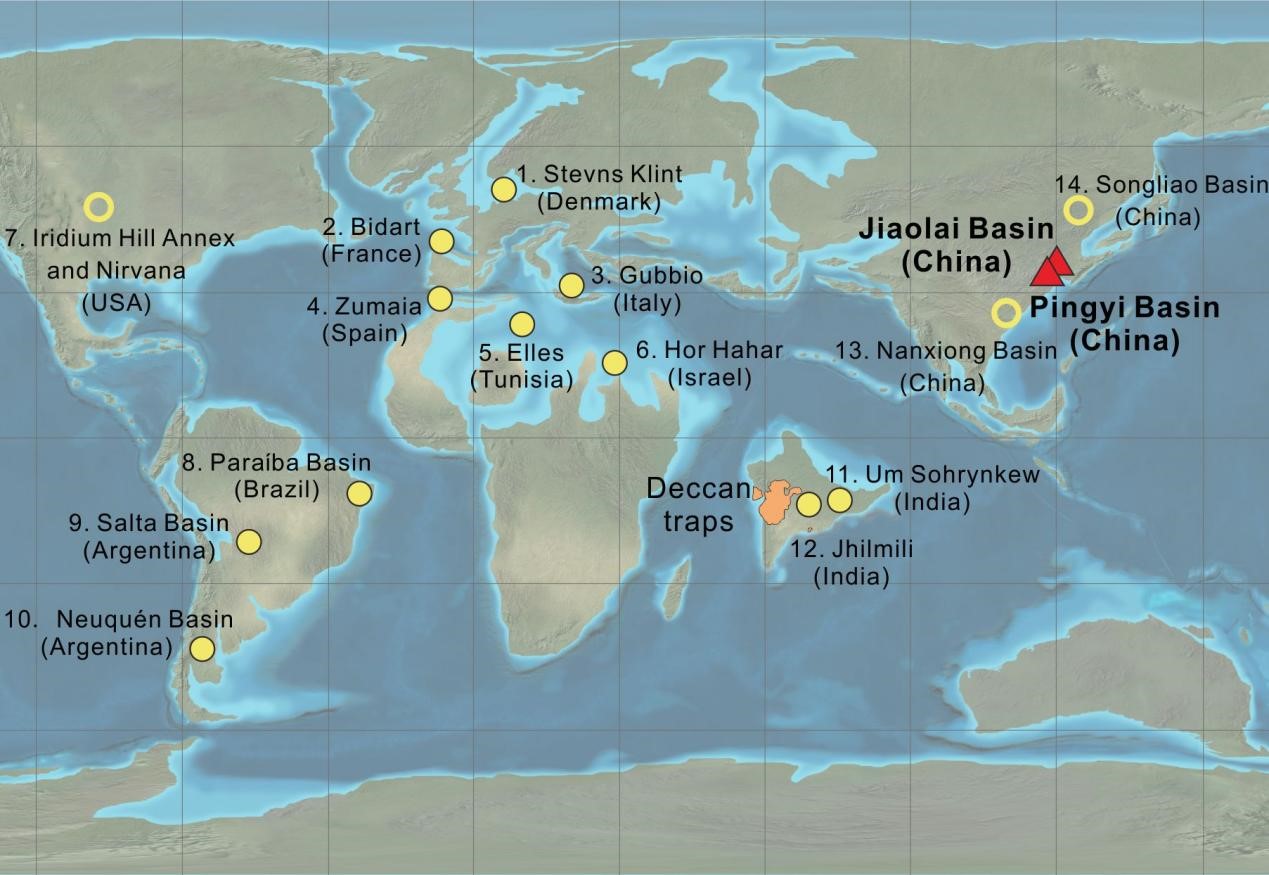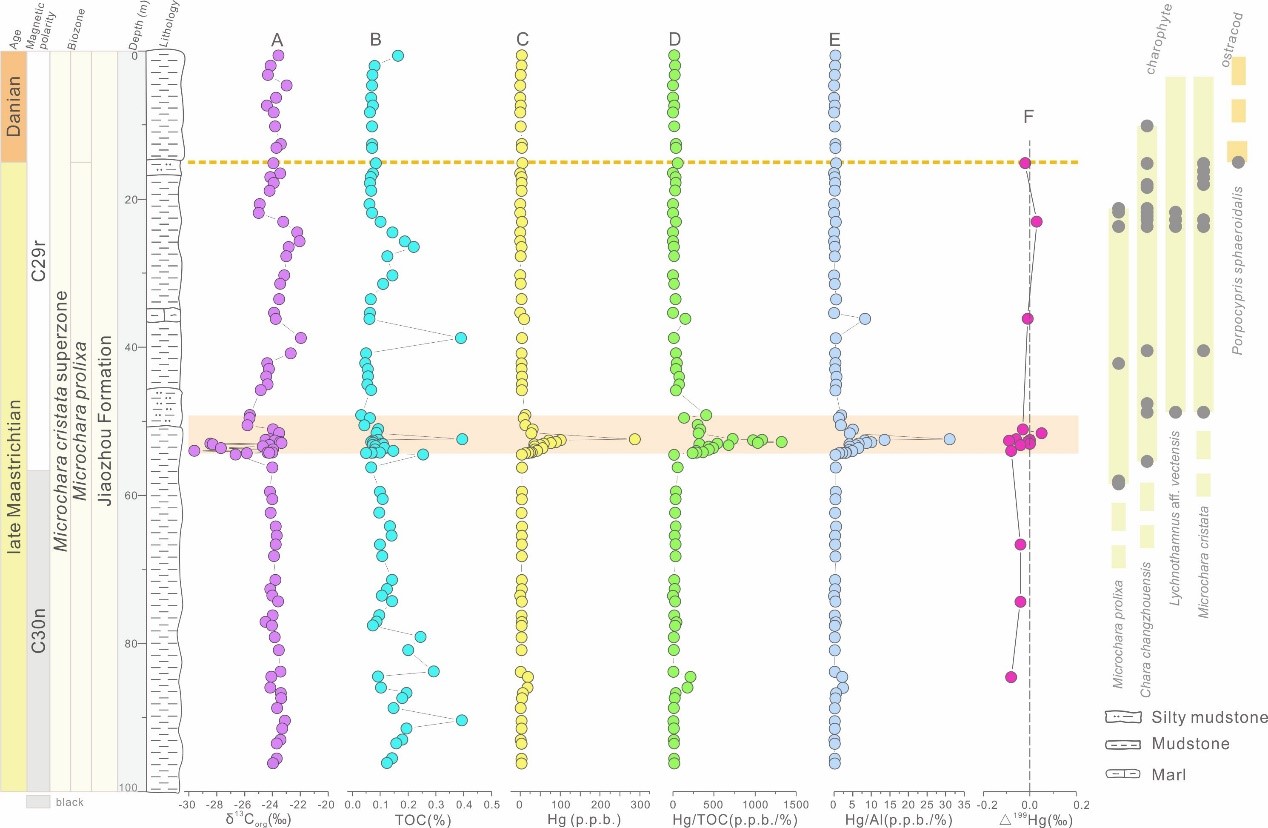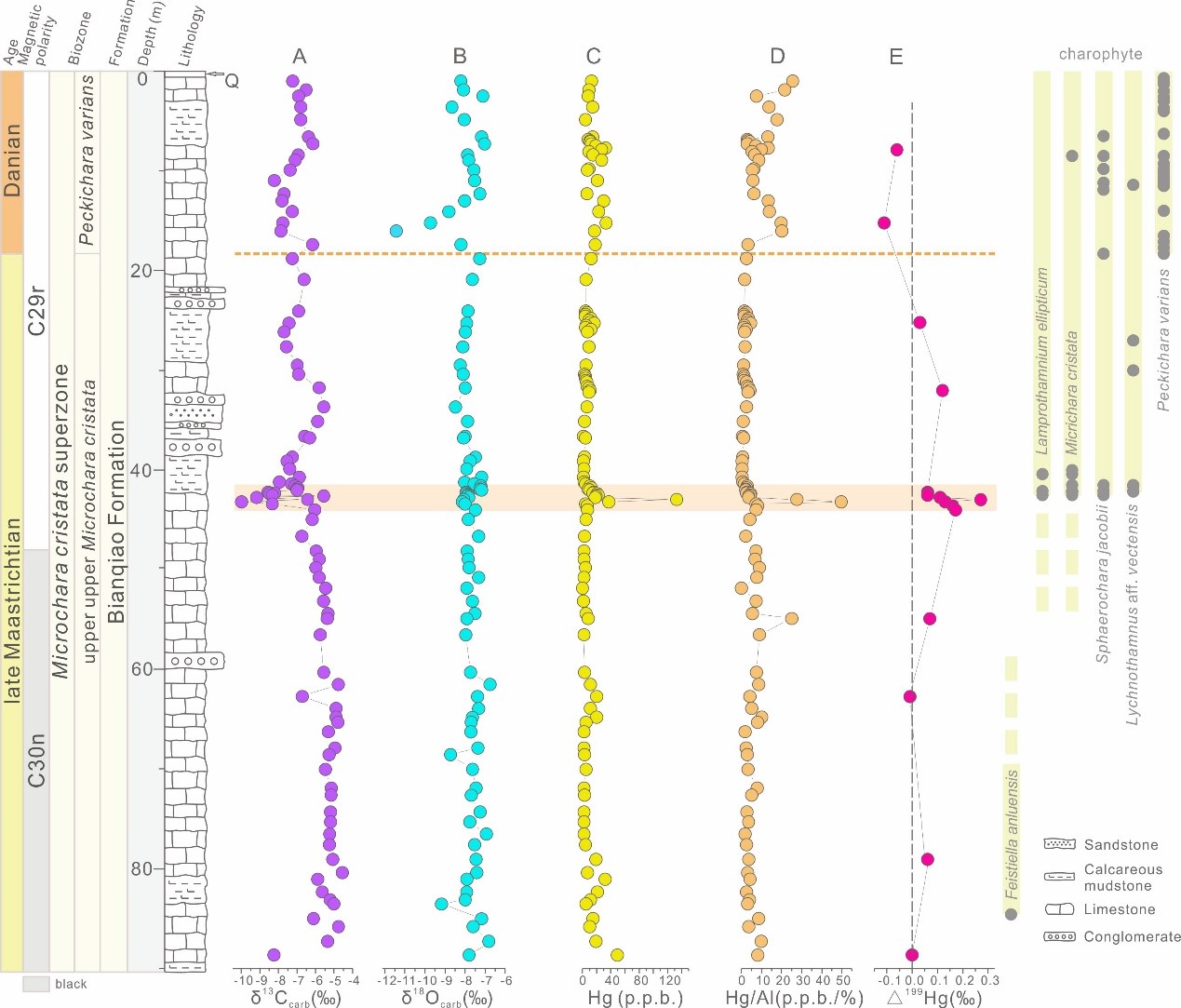The timing and ecological impacts of the Deccan large igneous province eruption are vigorously debated. About 150–300,000 years before the end-Cretaceous mass extinction, the Deccan basalt had already begun to erupt. Deccan large igneous province emitted a large amount of greenhouse gases such as CO2 through intrusion and eruption, which have contributed to global warming, which is called the Late Maastrichtian warming event (LMWE).
Elucidating the mechanism and process of this warming event can provide substantial evidence for understanding the cause of the end-Cretaceous mass extinction and offer new insights into the understanding of the coupling relationship between the carbon cycle and the greenhouse Earth. But currently, we have a very limited understanding of LMWE in terrestrial sediments related to the first eruption of the Deccan Traps and its impacts on terrestrial ecosystems.
An international research team led by Dr. LI Sha, Prof. WANG Bo, Prof. ZHANG Haichun, Prof. WANG Qifei from the Nanjing Institute of Geology and Palaeontology, Chinese Academy of Sciences (NIGPAS), Prof. Stephen E. Grasby from Geological Survey of Canada, Prof. CHEN Jiubin from the Tianjin University, and Prof. WAN Xiaoqiao from the China University of Geosciences, studied two drill cores across the Cretaceous/Paleocene (KPg)boundary in Shandong Province, based on high-precision biostratigraphic, paleoecological and geochemical methods. The research results were recently published online in Geology, a leading international journal of geology.
“We used mercury concentrations and isotopic compositions, a proxy for volcanic activity, to assess impacts on terrestrial environments.” Says LI, “and we systematic studied two drill cores across the KPg boundary in eastern China that represent two different depositional environments: clastic deposits in the Jiaolai Basin and carbonate deposits in the Pingyi Basin.”
Both drill cores exhibit strong Hg enrichment prior to the KPg boundary. Near consistent mass-independent fractionation (MIF) of odd-Hg isotopes (odd-MIF) in the Jiaolai Basin likely indicates a volcanogenic source of Hg spikes below the KPg boundary. Odd-MIF isotopes in the Pingyi Basin likewise suggest a volcanogenic Hg source but with a terrestrial Hg signature of lower Δ199Hg values before and after the Hg spike interval.
The Hg enrichment level can be stratigraphically correlated to the beginning of the LMWE and is consistent with a strong, negative carbon-isotope excursion (CIE) in both δ13Corg (organic matter) and δ13Ccarb (carbonate), suggesting a disturbance of the global carbon cycle induced by a major pulse of Deccan Traps volcanism. The discovery of a terrestrial record of pre-KPg boundary Deccan volcanism provides robust evidence of global in?uence of the Deccan Traps large igneous province during the LMWE.
“In summer, our findings would provide new evidence for the understanding of the relationship between volcanic carbon emissions and the Greenhouse Earth and for understanding the impact of today's global warming on lacustrine environments and biota.” says LI.
This research was supported by the National Natural Science Foundation of China, and the Youth Innovation Promotion Association of the Chinese Academy of Sciences.
Reference: Sha Li, Stephen E. Grasby, Xiangdong Zhao, Jiubin Chen, Daran Zheng, He Wang, Yanan Fang, Qi Zhang, Tingting Yu, Jingxiang Tian, Shengxian Du, Edmund A. Jarzembowski, Qifei Wang, Haichun Zhang, Xiaoqiao Wan, Bo Wang; Mercury evidence of Deccan volcanism driving the Latest Maastrichtian warming event. Geology 2022. https://doi.org/10.1130/G50016.1.

Figure 1. Paleogeographic map showing locations of the cores studied (red triangles) and the Deccan Traps (orange area). Locations of Cretaceous-Paleogene (KPg) sections where Hg anomalies have been documented are indicated by solid yellow circles for marine sections and open yellow circles for terrestrial sections.

Figure 2. Mercury concentrations and organic carbon isotopic compositions in boreholes in the Jiaolai Basin (eastern China).

Figure 3. Mercury concentrations and carbonate isotopic compositions in boreholes in the Pingyi Basin (eastern China).
Contact:
LIU Yun, Propagandist
Email: yunliu@nigpas.ac.cn
Nanjing Institute of Geology and Palaeontology, Chinese Academy of Sciences
Nanjing, Jiangsu 210008, China
